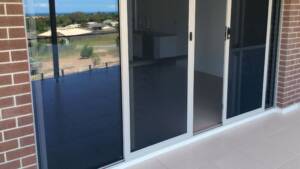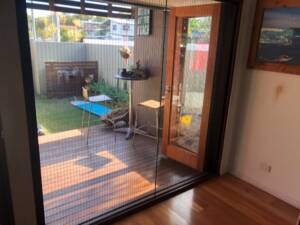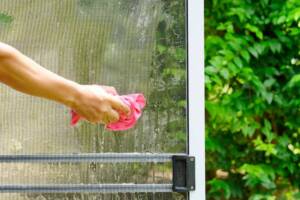Installing fly screens in your home is a great way to keep bugs out while letting fresh air in. But if you make mistakes during the installation, your fly screens might not work as well as they should. This article will help you avoid common fly screen installation mistakes with our expert tips. By following these tips, you can ensure a smooth process and effective results for your home.
Table of Contents
- Introduction
- Why Fly Screens Are Important
- Common Mistakes in Fly Screen Installation
- Incorrect Measurements
- Using the Wrong Tools
- Not Reading the Instructions
- Ignoring the Type of Door or Window
- Improper Alignment
- Not Checking for Gaps
- Forgetting to Secure the Screen
- How to Avoid These Mistakes
- Measure Twice, Cut Once
- Use the Right Tools
- Read the Instructions Carefully
- Choose the Right Screen for Your Door or Window
- Align the Screen Properly
- Check for Gaps and Secure the Screen
- Installation Tips for Different Types of Fly Screens
- Magnetic Fly Screens
- Retractable Fly Screens
- Sliding Fly Screens
- Hinged Fly Screens
- Maintenance Tips for Fly Screens
- Conclusion
Introduction
Fly screens are a simple and effective way to keep insects out of your home. They allow you to enjoy fresh air without the annoyance of bugs. However, installing fly screens can be tricky if you don’t know what you’re doing. Making mistakes during installation can lead to ineffective screens that don’t do their job properly. In this article, we’ll discuss the common mistakes people make when installing fly screens and how to avoid them. By following our tips, you can ensure a smooth installation process and get the best results.
Why Fly Screens Are Important
Fly screens are important for several reasons:
- Keep Bugs Out: They keep mosquitoes, flies, and other insects from entering your home.
- Let Fresh Air In: They allow fresh air to circulate through your home, improving ventilation.
- Improve Indoor Air Quality: They help improve the air quality inside your home by letting in fresh air and keeping out pests.
- Enhance Comfort: They make your home more comfortable by reducing the presence of annoying bugs.
- Protect Your Health: They help protect your health by keeping out insects that can carry diseases.
Now that we understand why fly screens are important, let’s look at the common mistakes people make when installing them.

Common Mistakes in Fly Screen Installation
Incorrect Measurements
One of the most common mistakes people make is not measuring correctly. If your measurements are off, the fly screen won’t fit properly. This can leave gaps where bugs can get in.
Using the Wrong Tools
Using the wrong tools can make the installation process harder and can lead to mistakes. For example, using a screwdriver that doesn’t fit the screws can strip them, making it difficult to secure the screen.
Not Reading the Instructions
Skipping the instructions is a big mistake. Each fly screen is different, and the instructions provide important information on how to install the screen correctly.
Ignoring the Type of Door or Window
Not all fly screens are suitable for all types of doors and windows. Ignoring the specific requirements of your door or window can result in a poor fit and ineffective screen.
Improper Alignment
If the fly screen is not aligned properly, it won’t function correctly. This can cause the screen to not close properly, leaving gaps for bugs to get in.
Not Checking for Gaps
After installing the screen, it’s important to check for gaps. Even small gaps can let bugs in. Not checking for gaps can defeat the purpose of the fly screen.
Forgetting to Secure the Screen
If the screen is not secured properly, it can come loose. This can make the screen ineffective and can cause it to get damaged easily.
How to Avoid These Mistakes
Measure Twice, Cut Once
To avoid incorrect measurements, always measure twice before cutting or installing the screen. Use a tape measure to get accurate measurements of your door or window. Write down the measurements to ensure you don’t forget them.
Use the Right Tools
Make sure you have the right tools for the job. This may include a screwdriver, drill, measuring tape, and a utility knife. Using the right tools will make the installation process easier and help you avoid mistakes.
Read the Instructions Carefully
Always read the instructions that come with the fly screen. The instructions provide important details on how to install the screen correctly. Following the instructions will help you avoid common mistakes.
Choose the Right Screen for Your Door or Window
Make sure you choose a fly screen that is suitable for your specific door or window type. For example, some screens are designed for sliding doors, while others are designed for hinged doors. Choosing the right screen will ensure a proper fit.
Align the Screen Properly
Take your time to align the screen properly during installation. Make sure it is straight and fits well with your door or window. Proper alignment will ensure the screen functions correctly and keeps bugs out.
Check for Gaps and Secure the Screen
After installing the screen, check for any gaps. Use a flashlight to help you see any small gaps. If you find any gaps, adjust the screen or use additional materials to seal them. Also, make sure the screen is securely attached to the frame.
Installation Tips for Different Types of Fly Screens
Magnetic Fly Screens
Magnetic fly screens are easy to install and remove. Here are some tips for installing them:
- Clean the Frame: Make sure the door or window frame is clean before installing the screen.
- Attach the Magnets: Attach the magnetic strips to the frame. Make sure they are aligned properly.
- Place the Screen: Place the screen on the frame and press it against the magnets. Make sure it is secure and there are no gaps.

Retractable Fly Screens
Retractable fly screens can be pulled out when needed and retracted when not in use. Here are some tips for installing them:
- Install the Housing: Attach the housing unit to the side of the door or window frame. Make sure it is level.
- Attach the Tracks: Install the tracks on the top and bottom of the frame. Make sure they are aligned properly.
- Insert the Screen: Insert the screen into the tracks and test the retracting mechanism. Make sure it moves smoothly.

Sliding Fly Screens
Sliding fly screens are great for saving space. Here are some tips for installing them:
- Install the Tracks: Attach the tracks to the top and bottom of the door or window frame. Make sure they are level.
- Place the Screen: Place the screen in the tracks and make sure it slides smoothly.
- Secure the Screen: Secure the screen to the tracks to prevent it from coming loose.

Hinged Fly Screens
Hinged fly screens open and close like a door. Here are some tips for installing them:
- Attach the Hinges: Attach the hinges to the side of the door or window frame. Make sure they are aligned properly.
- Install the Screen: Attach the screen to the hinges and make sure it swings open and closed smoothly.
- Secure the Screen: Secure the screen with screws to prevent it from coming loose.

Maintenance Tips for Fly Screens
To keep your fly screens in good condition, follow these maintenance tips:
- Clean Regularly: Clean your screens regularly with a soft brush or vacuum cleaner to remove dust and dirt.
- Check for Damage: Look for holes or tears in the screen and repair them as soon as you find them.
- Remove in Winter: If you don’t need the screens in winter, take them out and store them safely to prevent damage.
- Handle with Care: Be gentle when opening and closing the screens to avoid damaging them.

Conclusion
Installing fly screens is a great way to keep bugs out of your home while letting fresh air in. However, it’s important to avoid common installation mistakes to ensure your screens are effective. By measuring accurately, using the right tools, reading the instructions, choosing the right screen, aligning the screen properly, checking for gaps, and securing the screen, you can avoid these mistakes. Additionally, following our installation and maintenance tips will help you keep your fly screens in good condition for years to come. With the right fly screens and proper installation, you can enjoy a bug-free and comfortable home.
